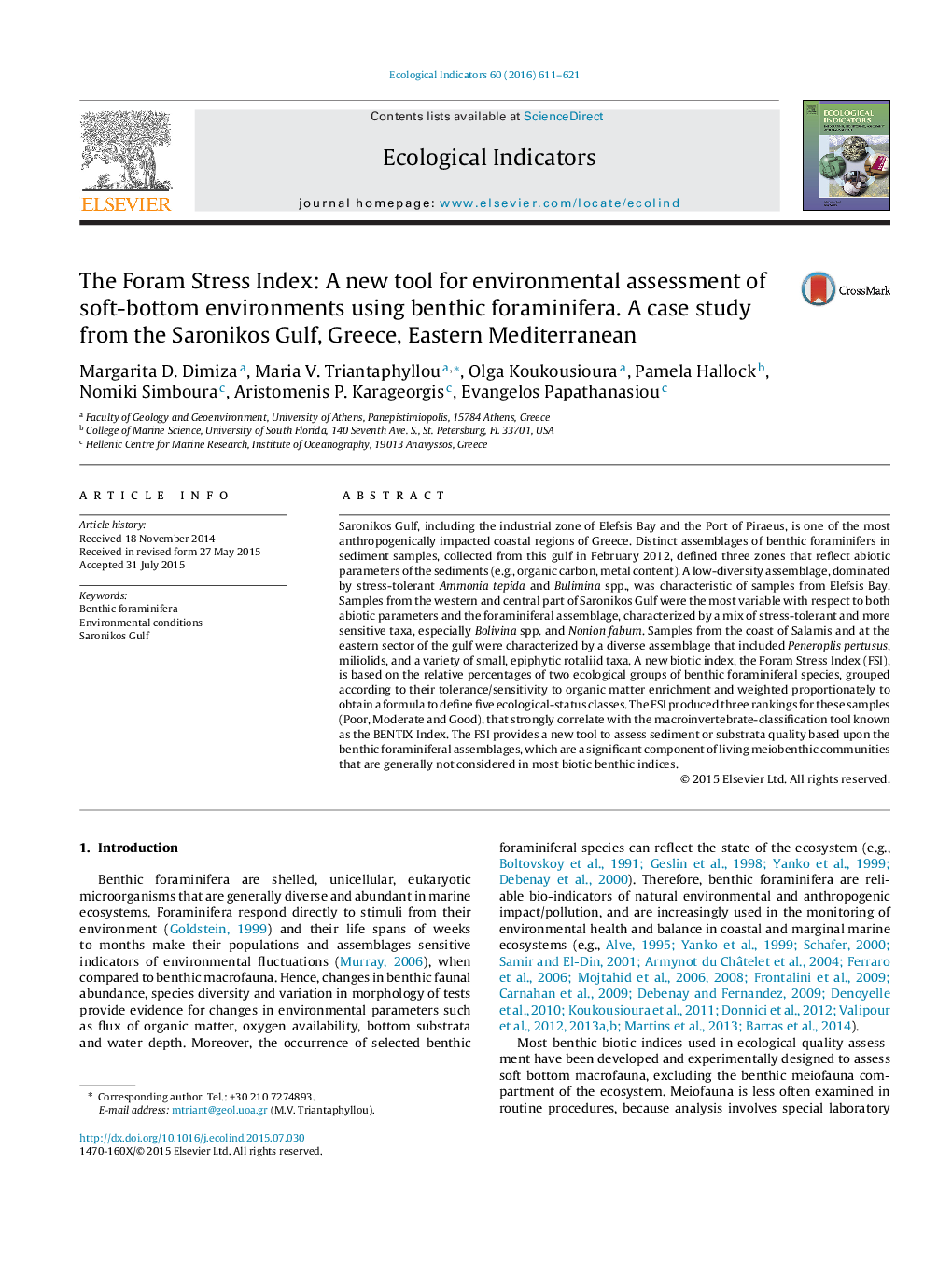| Article ID | Journal | Published Year | Pages | File Type |
|---|---|---|---|---|
| 6294118 | Ecological Indicators | 2016 | 11 Pages |
Abstract
Saronikos Gulf, including the industrial zone of Elefsis Bay and the Port of Piraeus, is one of the most anthropogenically impacted coastal regions of Greece. Distinct assemblages of benthic foraminifers in sediment samples, collected from this gulf in February 2012, defined three zones that reflect abiotic parameters of the sediments (e.g., organic carbon, metal content). A low-diversity assemblage, dominated by stress-tolerant Ammonia tepida and Bulimina spp., was characteristic of samples from Elefsis Bay. Samples from the western and central part of Saronikos Gulf were the most variable with respect to both abiotic parameters and the foraminiferal assemblage, characterized by a mix of stress-tolerant and more sensitive taxa, especially Bolivina spp. and Nonion fabum. Samples from the coast of Salamis and at the eastern sector of the gulf were characterized by a diverse assemblage that included Peneroplis pertusus, miliolids, and a variety of small, epiphytic rotaliid taxa. A new biotic index, the Foram Stress Index (FSI), is based on the relative percentages of two ecological groups of benthic foraminiferal species, grouped according to their tolerance/sensitivity to organic matter enrichment and weighted proportionately to obtain a formula to define five ecological-status classes. The FSI produced three rankings for these samples (Poor, Moderate and Good), that strongly correlate with the macroinvertebrate-classification tool known as the BENTIX Index. The FSI provides a new tool to assess sediment or substrata quality based upon the benthic foraminiferal assemblages, which are a significant component of living meiobenthic communities that are generally not considered in most biotic benthic indices.
Related Topics
Life Sciences
Agricultural and Biological Sciences
Ecology, Evolution, Behavior and Systematics
Authors
Margarita D. Dimiza, Maria V. Triantaphyllou, Olga Koukousioura, Pamela Hallock, Nomiki Simboura, Aristomenis P. Karageorgis, Evangelos Papathanasiou,
